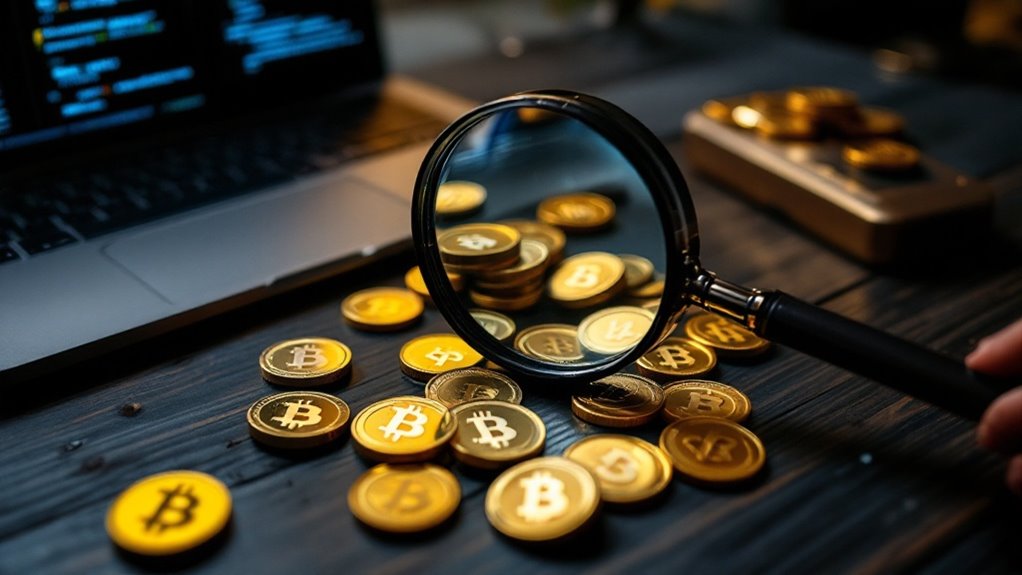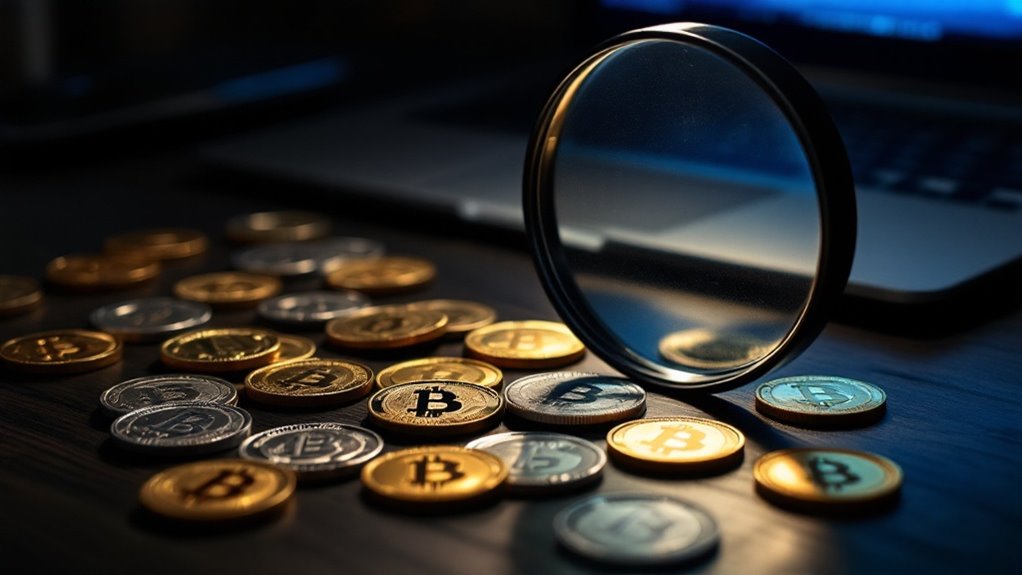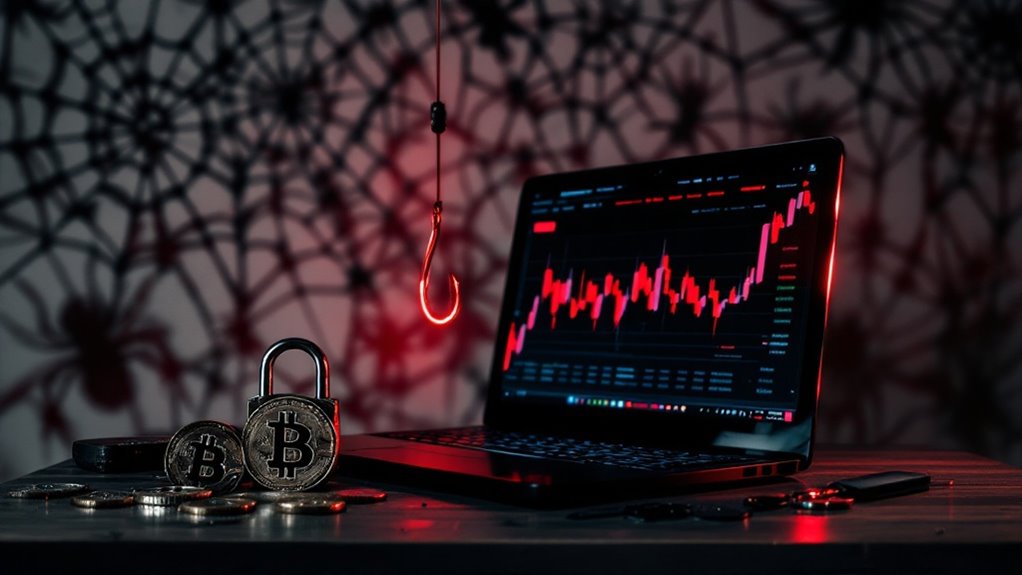Identifying fake cryptocurrencies requires a multi-layered approach focused on key warning signs. Legitimate projects showcase transparent development teams, detailed whitepapers with original research, and active community engagement. Red flags include anonymous developers, plagiarized documentation, and aggressive marketing promising unrealistic returns. Smart contract audits, balanced token distributions, and consistent trading volumes help verify authenticity. While no method is foolproof, understanding these fundamental indicators empowers investors to navigate the complex crypto landscape with greater confidence.

As the cryptocurrency market continues to expand at a dizzying pace, distinguishing legitimate digital assets from elaborate scams has become a significant skill for investors.
Like prospectors sifting through river sediment for genuine gold, modern crypto enthusiasts must develop a keen eye for authenticity in an increasingly crowded digital landscape.
Modern crypto investors navigate the digital wilderness like old-world prospectors, carefully filtering value from an ocean of worthless tokens.
A project's whitepaper serves as its technological blueprint, offering the first glimpse into its legitimacy.
Sharp investors scrutinize these documents with the precision of master jewelers, checking for thorough research, clear technical explanations, and original content.
A hastily assembled or plagiarized whitepaper often signals trouble lurking beneath the surface, while detailed protocols and well-documented blockchain architectures suggest genuine innovation.
The development team's transparency stands as another important indicator of authenticity.
While legal tender status varies by jurisdiction, legitimate projects ensure compliance with local regulations.
Legitimate projects proudly showcase their team members' credentials and industry experience, while fraudulent ones often hide behind anonymous profiles or fabricated identities. The rising prevalence of rug pull scams makes verifying team credentials more crucial than ever.
Like a house built on sand, cryptocurrencies without verifiable developer backgrounds tend to collapse under scrutiny.
Token metrics tell their own story through numbers that don't lie. With scam smart contracts being created every hour, investors must be particularly vigilant when analyzing token distributions and patterns.
Healthy cryptocurrencies display consistent trading volumes, balanced holder distribution, and sustainable liquidity levels.
In contrast, fraudulent tokens often exhibit erratic price movements, concentrated ownership, and artificially inflated market caps – red flags waving in the digital wind.
The project's online presence and community engagement provide essential clues about its authenticity.
Genuine cryptocurrencies nurture active, organic communities where meaningful discussions flourish.
Scams, however, often resort to bought followers, fake endorsements, and aggressive marketing tactics that promise unrealistic returns.
Technical verification serves as the final safeguard against deception.
Smart contracts should be publicly available and audited by reputable firms, while regulatory compliance provides an additional layer of legitimacy.
Like a skilled detective, the astute investor examines contract code for suspicious elements such as excessive transaction fees or transfer restrictions.
In this wild west of digital assets, thorough due diligence remains the investor's most reliable compass.
Frequently Asked Questions
How Long Should I Wait Before Investing in a New Cryptocurrency?
Investors should wait 6-12 months before investing in new cryptocurrencies. This period allows observation of market performance, project development, security audits, exchange listings, and community growth before making investment decisions.
What Role Do Social Media Influencers Play in Cryptocurrency Scams?
Social media influencers often orchestrate cryptocurrency scams by promoting fraudulent coins, running pump-and-dump schemes, and failing to disclose paid promotions, leading to significant financial losses for their followers who invest based on recommendations.
Can Blockchain Technology Itself Be Faked?
While blockchain's core technology is resistant to tampering, malicious actors can create fake versions through spoofed explorers, cloned networks, and manipulated consensus mechanisms. However, the original blockchain remains mathematically verifiable and secure.
Are Hardware Wallets Completely Safe From Fake Cryptocurrency Schemes?
Hardware wallets cannot fully protect against fake cryptocurrency schemes. While they secure legitimate digital assets effectively, they cannot prevent users from storing or transacting with fraudulent tokens or falling for scam projects.
How Often Should I Update My Cryptocurrency Portfolio to Avoid Scams?
Regular portfolio monitoring should occur weekly, with daily checks during high volatility periods. Implementing price alerts and tracking tools helps detect unusual activities. Two-factor authentication and secure exchanges enhance protection against fraud.









